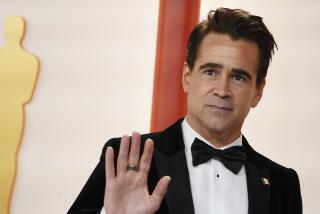Surgery Offers Hope for Genetic Disorder : Operation Utilizes Partially Matched Marrow Transplants
SAN FRANCISCO — James Patrick Murphy Jr., 3 1/2, says “cheese” automatically whenever a camera is pointed in his direction. “James,” his mother said fondly, “is a natural-born star.”
Besides, he has had plenty of practice posing. “I shot a whole album of him while he was in the hospital,” Patricia Murphy added.
That was during the winter of 1983-84, after James had been diagnosed as having severe combined immuno deficiency disease. SCID is a genetic disorder that leaves the body defenseless against infectious disease because the bone marrow lacks the manufacturing mechanism to produce cells for fighting even minor infections.
For Patricia and her husband, James Murphy, both 28, it was a particularly painful diagnosis; in 1981, their first son, Lonniel, had died as a result of the immuno deficiency disorder at the age of 18 months.
Only Known Cure
A bone marrow transplant, in which the patient’s defective marrow is replaced with healthy marrow from a donor, is the only known cure for SCID. With children such as James, for whom there is no matched donor available, the only kind of transplant possible is a partially matched one.
The procedure was considered too dangerous to try even five years ago, until a new technique--soy bean agglutinin processing--was developed.
“For James, there was no alternative treatment, and it was the only chance he had of survival,” according to Dr. Morton J. Cowan, director of the University of California at San Francisco’s Pediatric Bone Marrow Transplant Unit.
UC San Francisco is the only center on the West Coast, and one of eight in the world, doing partially matched bone marrow transplants using soy bean agglutinin processing. The technique involves adding soy bean agglutinin, a purified protein extracted from soy beans, to the donor marrow in the laboratory. The procedure was developed by Israeli biophysicist Yair Reisner who recently traveled to Moscow, along with three UCLA physicians, to treat victims of the Chernobyl nuclear reactor disaster.
The chances of a successful bone marrow transplant are greatest when HLA-antigens--proteins on the surface of white blood cells and most other cells in the body--are the same in both donor and recipient, Cowan explained.
The ideal donor is an identical twin. Since HLA-antigens are inherited from each parent, there is a 25% chance that a transplant patient will match with a sibling. A parent is always partially matched with his or her child.
With partial matches, the chances of success are lower. Cowan said that soy bean processing is important in partially matched transplants because “it greatly reduces the risk by significantly lowering the occurrence and severity of graft versus host disease, a serious condition in which cells present in the donated marrow attack the recipient’s tissues. With soy bean processing we can separate and remove the mature T-cells mainly responsible for graft versus host disease from the donor marrow.”
The soy bean agglutinin binds selectively to potentially harmful white blood cells known as T-lymphocytes, making it possible to remove them in the laboratory before the marrow is given to the transplant patient.
When James was first diagnosed, in August, 1983, Patricia Murphy recalls saying, “Oh no, they are wrong.” She explained that “Lonniel was sick from 6 weeks, he never learned to walk, but James was never sick. I just couldn’t believe it.”
In and Out of Hospital
The transplant operation had to be put off because James was in and out of hospitals with one infection after another, including pneumonia, meningitis and hydrocephalus as a complication of the meningitis. The transplant was finally performed on Jan. 5, 1984--Cowan’s birthday--with Patricia Murphy as donor. Two weeks later James returned home.
“Our goal is for these children to live normal lives, that they do as much as they can,” Cowan said. “Sometimes it takes a while to convince some families that their kid is OK, and can be with other kids. If James can’t be James, it isn’t worth it.”
James takes an antibiotic daily and receives gamma globulin injections once a month. Twice a year he returns to UCSF for blood studies, “to make sure the thing is working,” Cowan said. On a recent visit, James’ 15-month-old sister Jacquelene came along for blood tests, which proved normal, Cowan added.
James’ father, a supply sergeant at the Presidio in San Francisco, where the family lives, acknowledged that it took a while to persuade him that his son could go out into the world. It takes some time after a transplant for the immune system to become fully reconstituted, and meanwhile infection is still a threat.
“First of all, I didn’t even want him to go out and play,” he recalled. “His mother was a little more calm than I was. In the beginning, I was up in the air (about) what kids he could be around. For a long time, he wasn’t around little kids. But either we had to isolate him or let him live his life, and his mother said, ‘Hey, just let him live.’ ”
The Murphys were anxious in part because as a consequence of the hydrocephalus, James has a shunt, a plastic drainage tube, implanted in his head. Says Patricia Murphy, “I’m teaching him to tell the other kids about the shunt, so they don’t hit him in the head. The other kids do understand.”
James seems to be a natural athlete; his father says that “Football is the only thing he will have to stay away from. I’m going to see if I can get him a special helmet for basketball.” Already the youngster is a demon dribbler, according to his mother, and “a rough, tough kid.”






